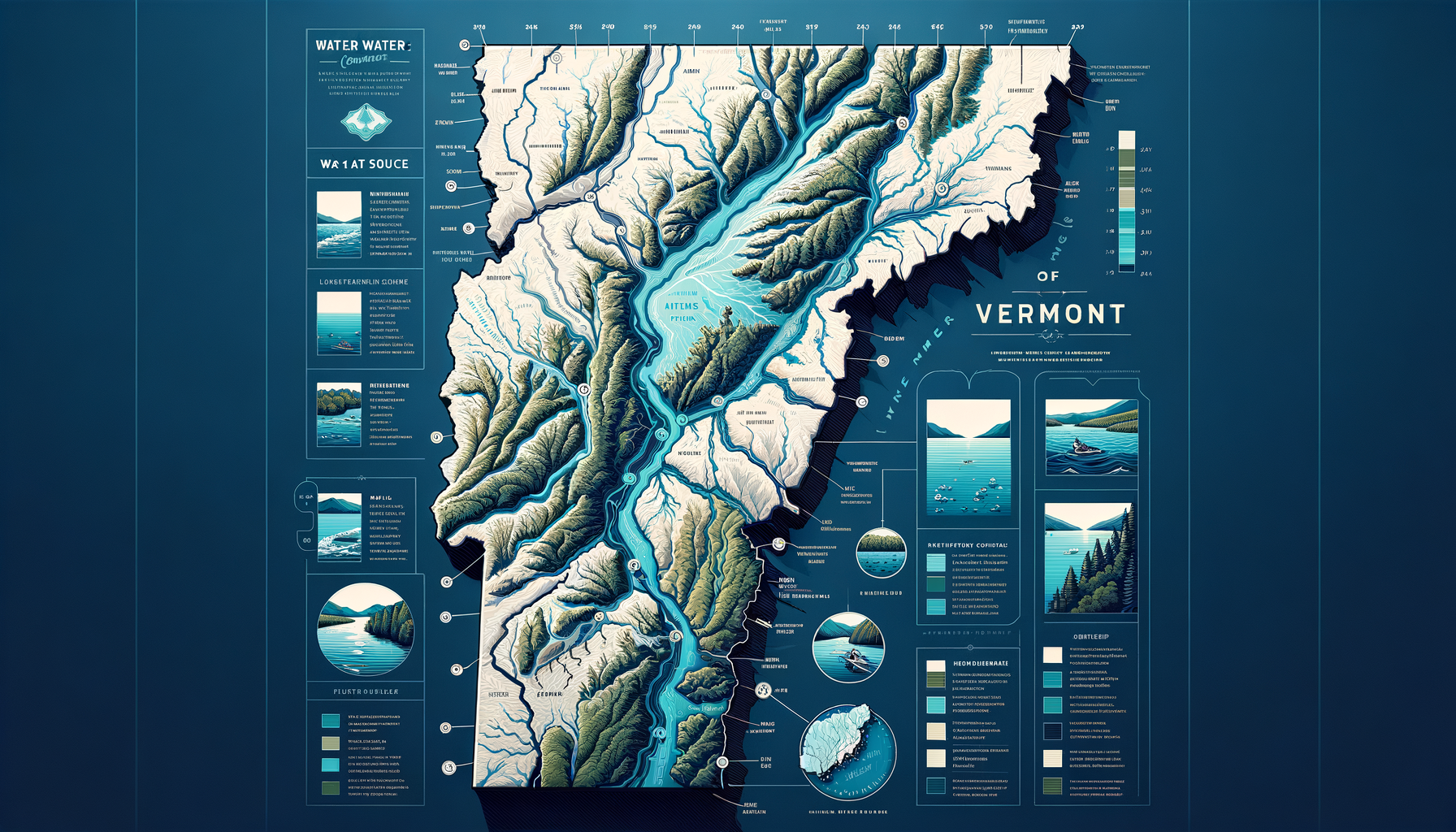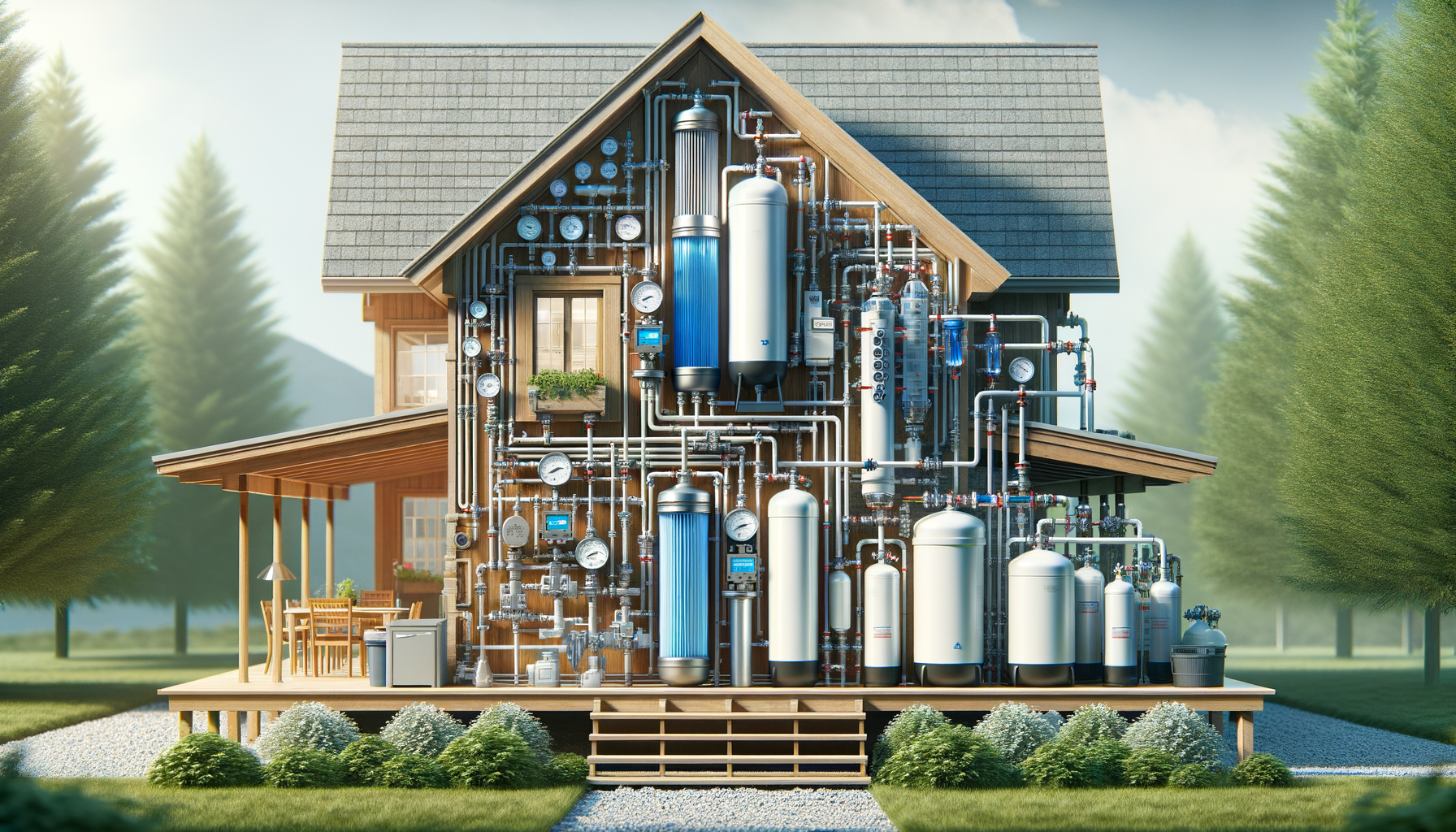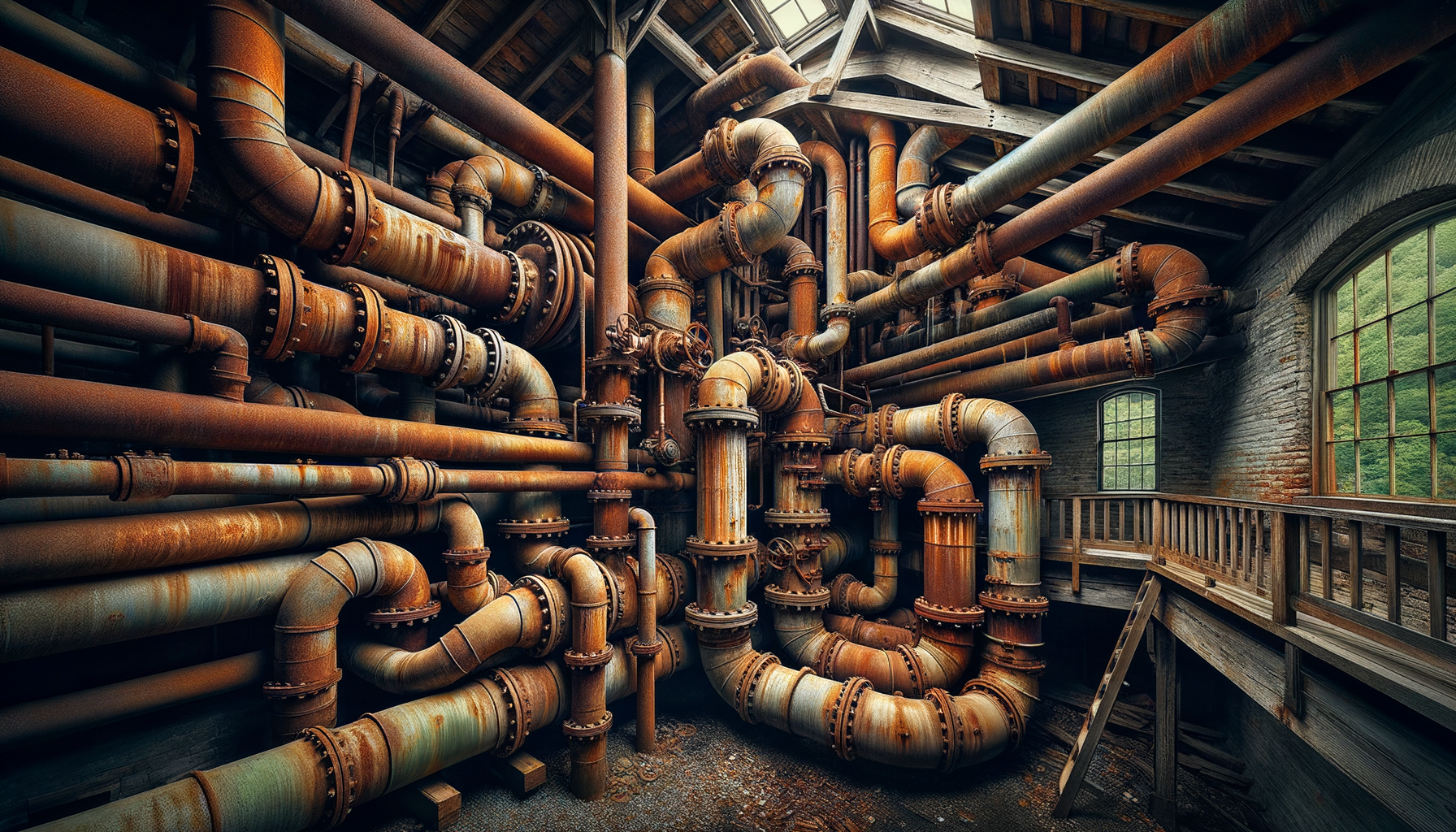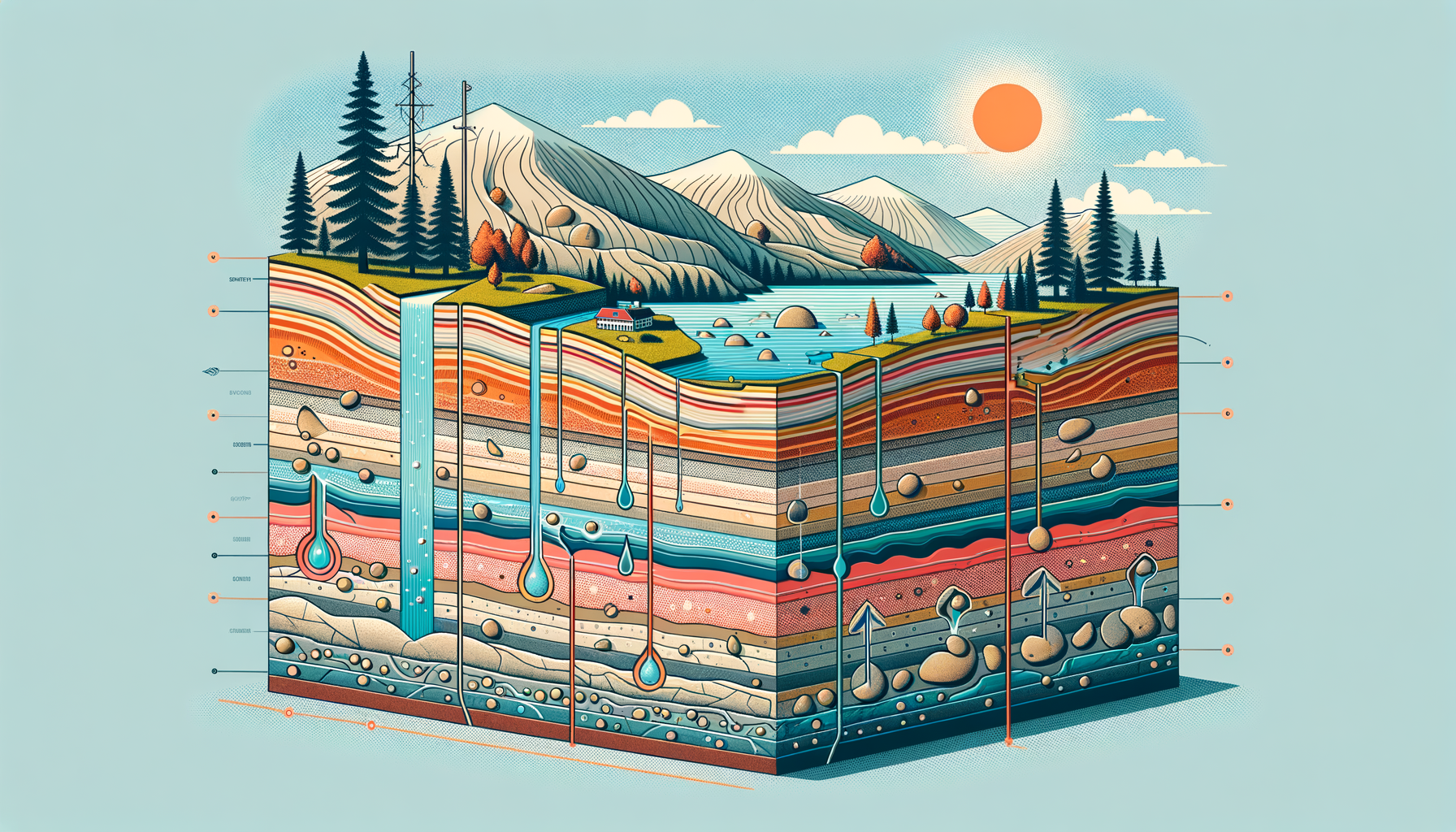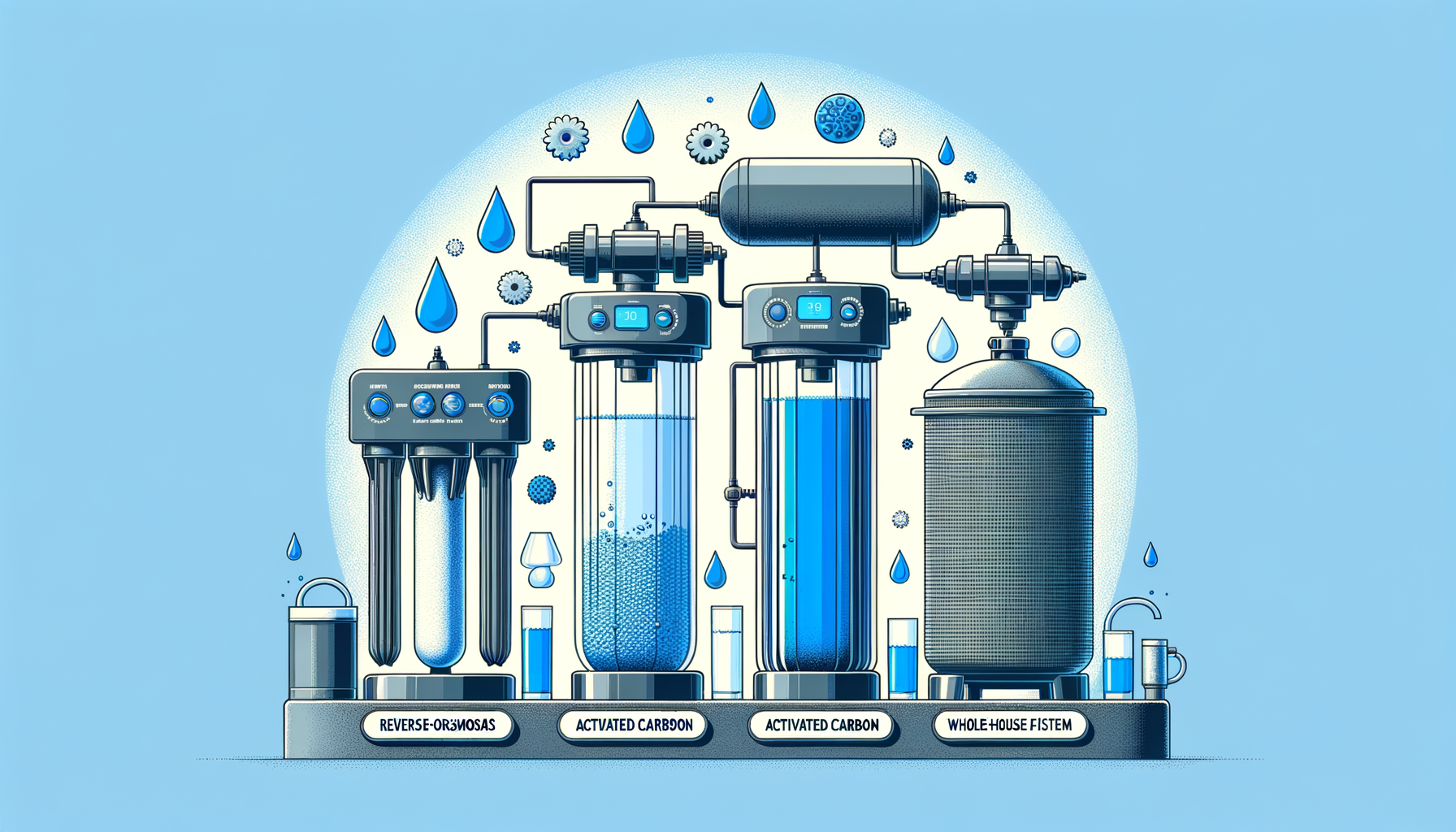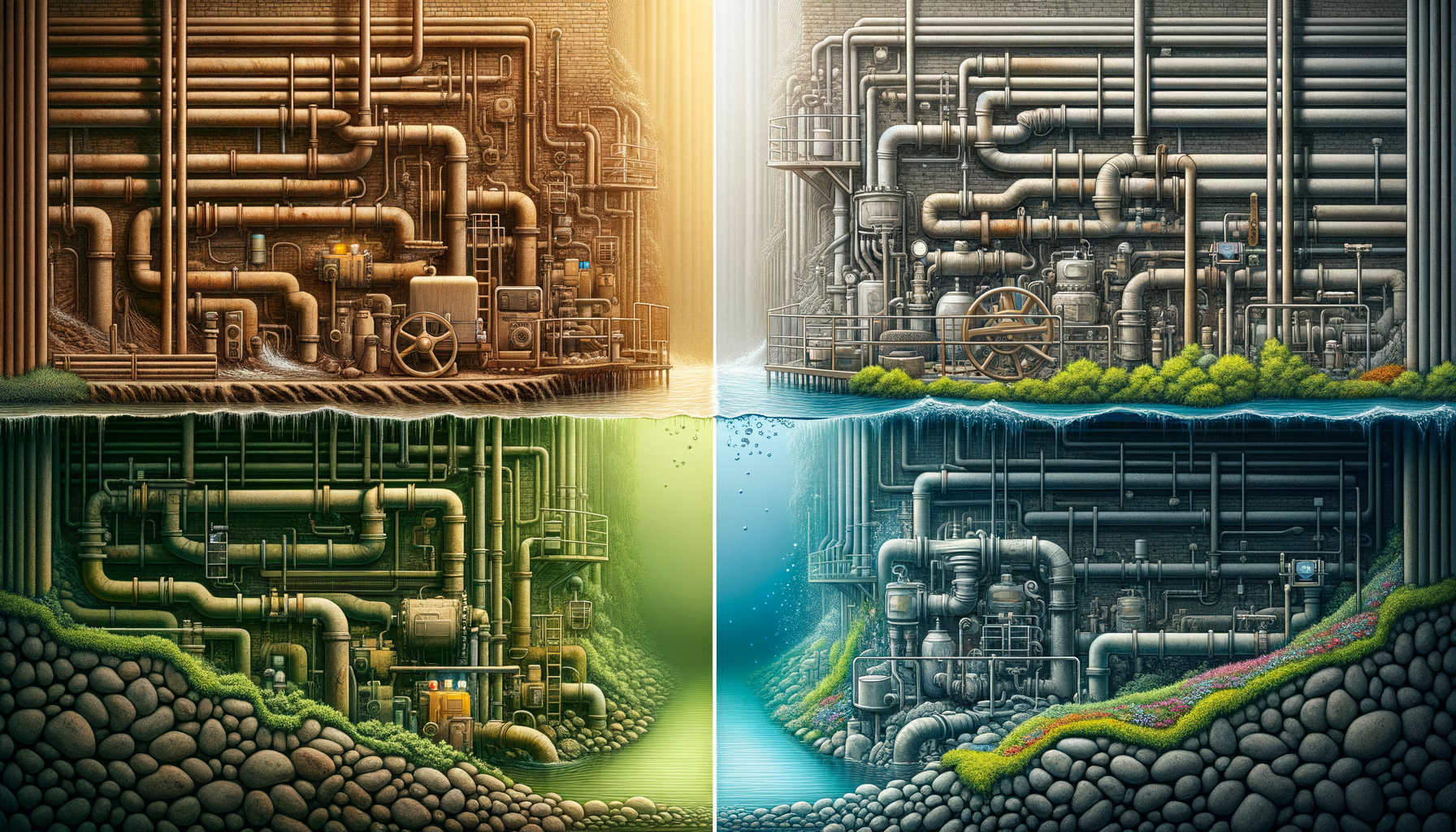Comprehensive Guide to Water Quality in Vermont State: Contaminants, Issues, and Water Filtration Solutions
by Ryan Moreau / updated March 5th, 2025
Vermont is renowned for its abundant and pristine water resources—from the expansive Lake Champlain to the winding rivers and streams flowing through the Green Mountain State. Despite this abundance, the state faces complex water quality challenges due to agricultural runoff, industrial legacies, and aging infrastructure in some communities. In this comprehensive guide, we explore the common contaminants in Vermont’s water, regional water quality challenges, and effective filtration solutions. Start by using our Water Quality Tool to get a customized analysis of your local water conditions.
Vermont’s rural landscapes and small towns rely heavily on a network of lakes, rivers, and groundwater for their water supply. While the state takes pride in its environmental stewardship, issues such as nitrate contamination from agriculture, arsenic from natural geological sources, and old lead pipes in historic buildings pose significant challenges. Understanding these issues is crucial for residents seeking to ensure their water is safe and clean.

Overview of Vermont’s Water Sources
Vermont’s water supply is integral to its natural beauty and the well-being of its residents. Key sources include:
- Lake Champlain: As one of the largest freshwater lakes in the United States, Lake Champlain provides water for municipal use, supports fisheries, and offers recreational opportunities.
- Rivers and Streams: Rivers such as the Winooski, Lamoille, and Otter Creek traverse the state, serving as vital sources for drinking water, agriculture, and hydroelectric power.
- Groundwater Aquifers: A significant portion of Vermont’s population relies on groundwater from wells, which is integral for rural communities and can be influenced by local geological formations.
- Surface Water from Lakes and Reservoirs: Smaller lakes and man-made reservoirs supplement water supply for various municipalities and are crucial during dry periods.
Ensuring the quality of these water sources requires ongoing monitoring and the implementation of effective water management practices to protect against contamination and overuse.
Common Water Quality Contaminants in Vermont
Vermont’s water sources may contain a range of contaminants due to natural geological formations, agricultural activities, and aging infrastructure in older buildings. To better understand what might affect your area, start with our Water Quality Tool and then review these common issues:
1. Arsenic
Arsenic naturally occurs in some Vermont bedrock aquifers and can leach into groundwater used for private wells and public water supplies. Chronic exposure to arsenic can lead to serious health issues, including skin lesions, cardiovascular diseases, and various cancers.
Water Filtration Options for Arsenic: Reverse Osmosis Water Filters.
2. Nitrates
Agricultural runoff from Vermont’s dairy farms and crop fields can elevate nitrate levels in groundwater and surface water. High nitrate levels are especially dangerous for infants and can cause methemoglobinemia or “blue baby syndrome.”
Water Filtration Options for Nitrates: Reverse Osmosis Water Filters
3. Lead
Aging infrastructure in older Vermont homes and public buildings may contain lead pipes or lead soldering. Corrosion can release lead into drinking water, posing serious neurological risks, particularly for children and pregnant women.
Water Filtration Options for Lead: Reverse Osmosis Water Filters, Activated Carbon Water Filters.
4. PFAs (Per- and Polyfluoroalkyl Substances)
PFAs contamination has been identified in several areas in Vermont, such as Bennington, due to industrial manufacturing sites and the use of firefighting foams. PFAs are persistent in the environment and associated with various health effects, including thyroid disease and certain cancers.
Water Filtration Options for PFAs: Activated Carbon Water Filters, Reverse Osmosis Systems
5. Radionuclides
Some groundwater sources in Vermont contain naturally occurring radionuclides like radium and uranium, which can pose health risks including increased cancer risks over time.
Water Filtration Options for Radionuclides: Reverse Osmosis Systems, Ion Exchange Systems.
6. Pesticides and Herbicides
Agricultural practices contribute to the presence of pesticides and herbicides in water sources, especially in rural areas. Exposure to these chemicals may lead to various health issues, including endocrine disruption and cancer.
Water Filtration Options for Pesticides and Herbicides: Activated Carbon Filters, Reverse Osmosis Systems
7. Microbial Contaminants
Private wells and surface water sources can be susceptible to microbial contamination from septic system failures, agricultural runoff, and wildlife. Bacteria, viruses, and parasites can cause gastrointestinal illnesses and other infections.
Water Filtration Options for Microbial Contaminants: UV Water Purifiers, Reverse Osmosis Systems with UV Disinfection.
8. Iron and Manganese
High levels of iron and manganese are common in some Vermont groundwater sources. While not typically health hazards, these minerals can cause staining, unpleasant taste, and may affect the efficiency of plumbing systems.
Water Filtration Options for Iron and Manganese: Whole House Water Filters with specialized media.
9. Copper
Corrosion of copper pipes, particularly in acidic water conditions, can lead to elevated copper levels in drinking water. While copper is an essential nutrient, high levels can cause gastrointestinal distress and liver or kidney damage.
Water Filtration Options for Copper: Reverse Osmosis Systems, Neutralizing Filters to correct water pH.
Regional Water Quality Challenges in Vermont
Vermont’s landscape and history contribute to various regional water quality challenges. According to the Vermont Agency of Natural Resources and the Environmental Protection Agency (EPA), key challenges include:
1. Agricultural Runoff in the Lake Champlain Basin
Excessive nutrients, particularly phosphorus from agricultural sources, contribute to algal blooms in Lake Champlain. These blooms can produce toxins that affect drinking water and recreational activities, posing health risks and harming aquatic ecosystems.
State and local agencies have been working collaboratively with farmers to implement best management practices aimed at reducing nutrient runoff. Initiatives include the adoption of conservation tillage, cover cropping, and the establishment of riparian buffer zones to filter runoff before it reaches water bodies.
2. Industrial Contamination Sites
Areas like Bennington have been impacted by historical industrial activities leading to PFAs contamination in groundwater. Remediation efforts are ongoing to address these legacy pollutants and protect public health (EPA – PFAS Information).
Residents in affected areas have been provided with bottled water and filtration systems while long-term solutions are implemented. State agencies continue to monitor PFAs levels and are working on holding responsible parties accountable for the cleanup and mitigation efforts.
3. Private Well Vulnerabilities
Rural communities relying on private wells may be at risk from contaminants like arsenic, radionuclides, and microbial pathogens due to natural geology and inadequate well construction or maintenance.
The Vermont Department of Health recommends regular testing of private wells to detect contaminants early. Homeowners are encouraged to test their water for bacteria, nitrates, arsenic, and other potential contaminants at least once a year, and to seek professional advice on appropriate treatment options if necessary.
4. Lead Pipes in Older Infrastructure
Some of Vermont’s towns and cities have older buildings with lead pipes and fixtures. Without proper corrosion control measures, lead can leach into drinking water, requiring infrastructure updates and homeowner awareness.
Programs are in place to replace lead service lines and to educate residents about the risks of lead exposure. Testing for lead in tap water is advised, especially in homes built before 1986, and certified filters can be used to reduce lead levels until permanent solutions are completed.
General Water Characteristics in Vermont
Beyond specific contaminants, Vermont’s unique geology and environmental conditions result in distinct water characteristics. Understanding these traits helps in selecting appropriate water treatment solutions:
1. Water Hardness
Water hardness in Vermont varies, with many regions experiencing moderately hard water due to the presence of calcium and magnesium minerals from the bedrock. Hard water can lead to scale buildup in plumbing and reduce the efficiency of soaps and detergents.
For households experiencing hard water, water softeners are recommended. If you’re unsure whether you need a water softener or which type fits your family’s needs, try our Water Softener Calculator for personalized guidance.
2. pH and Corrosive Water
Some areas in Vermont have slightly acidic water, with pH levels below 7.0. Acidic water can be corrosive to plumbing, leading to leaching of metals like copper and lead from pipes and fixtures.
- Acidic Conditions: Low pH water can damage plumbing infrastructure and potentially contaminate drinking water with metal ions.
- Protective Measures: Using neutralizing filters or adjusting water pH can help mitigate corrosion issues.
Homeowners experiencing issues such as blue-green stains (from copper corrosion) or tiny pinhole leaks in pipes may be dealing with acidic water. Regular testing of water pH and installing appropriate neutralizing systems can prevent long-term damage to plumbing and potential health hazards.
3. Natural Organic Matter (NOM)
The presence of natural organic matter in surface water sources, such as humic and fulvic acids from decaying vegetation, can affect water color, taste, and odor. It may also react with disinfectants to form disinfection byproducts.
Residents using private surface water sources may notice seasonal changes in water quality due to variations in NOM levels, necessitating proper filtration and treatment to maintain water quality year-round.
Utilizing the Water Quality Tool for Vermont Residents
Understanding your local water quality is essential for ensuring safe drinking water. Our Water Quality Tool enables Vermont residents to:
- Enter their zip code for a detailed analysis of local water sources
- View data on common contaminants in public and private water supplies
- Receive personalized recommendations for filtration systems based on your water quality challenges
Recommended Filtration Solutions for Common Vermont Contaminants
Based on the prevalent contaminants identified in Vermont’s water sources, the following filtration systems are highly recommended:
1. Reverse Osmosis Systems
Reverse Osmosis Systems offer comprehensive removal of arsenic, nitrates, radionuclides, lead, and other contaminants. These systems are suitable for both under-sink and whole-house installations, providing high-quality drinking water.
2. Activated Carbon Filters
Activated Carbon Filters are effective in removing organic compounds, pesticides, herbicides, and improving taste and odor. They are ideal for treating water affected by agricultural runoff and natural organic matter.
3. UV Water Purifiers
UV Water Purifiers are excellent for inactivating microbial contaminants. They are especially useful for households relying on private wells or surface water sources susceptible to bacterial contamination.
4. Neutralizing Filters
Neutralizing filters help to correct acidic water conditions, reducing the corrosivity of water and preventing metal leaching from pipes. They are essential in areas with low-pH groundwater.
Local Water Testing Services in Vermont
Accurate water testing is essential to identify specific contaminants in your water supply. We recommend using SimpleLab for comprehensive water quality analysis. Their user-friendly kits and detailed lab reports empower you to make informed decisions about your water filtration system.
Case Studies: Addressing Water Quality Issues in Vermont
Real-world examples provide valuable insights into how various water quality challenges in Vermont are being addressed:
1. Bennington: Tackling PFAs Contamination
The Bennington area faced significant PFAs contamination from a former manufacturing facility. State and local authorities, along with community efforts, have implemented filtration systems and extended municipal water lines to affected residents, reducing exposure to these harmful chemicals.
Ongoing monitoring and legal actions are in place to ensure responsible parties contribute to remediation efforts. The community’s proactive response serves as a model for addressing similar contamination issues elsewhere.
2. Lake Champlain Basin: Reducing Agricultural Runoff
To combat nutrient pollution causing harmful algal blooms in Lake Champlain, Vermont has implemented agricultural best management practices, such as buffer strips and nutrient management plans. These efforts aim to reduce phosphorus runoff and improve water quality for communities relying on the lake.
Collaborative initiatives between farmers, environmental organizations, and government agencies have shown promising results in decreasing algal bloom occurrences, benefiting both the ecosystem and local economies dependent on tourism and recreation.
3. Private Well Owners: Addressing Arsenic Contamination
In regions where arsenic is naturally present in groundwater, residents have installed reverse osmosis systems and other point-of-use treatments to reduce arsenic levels in drinking water. Educational programs by the state promote regular testing and awareness of arsenic risks.
Community outreach and resources provided by the Vermont Department of Health have empowered homeowners to take action, ensuring safer drinking water and highlighting the importance of proactive water quality management.
Call to Action
Vermont’s abundant water resources—from the majestic Lake Champlain to the pristine mountain springs—are a vital asset that requires proactive stewardship. Understanding your local water challenges and implementing effective filtration solutions is essential for safeguarding your household’s health.
Start by entering your zip code into our Water Quality Tool for a detailed analysis of your water supply. Then, explore our filter review articles to find the most effective system for your needs. Finally, confirm your water’s safety with comprehensive water testing services to ensure you have the clean, safe water your home deserves.

